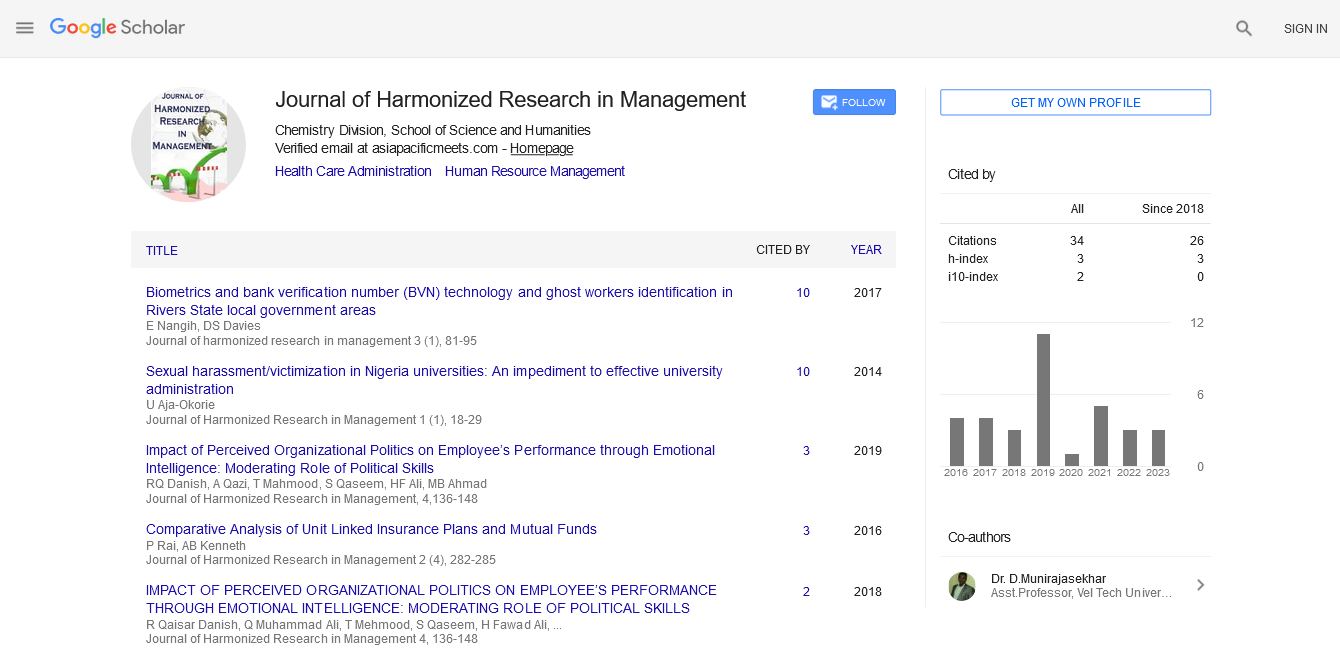INTERPLAY BETWEEN LEADERSHIP INGREDIENTS, RESOURCE BASED HUMAN RESOURCE MODEL (RBV) AND PEOPLE ORIENTED HR POLICIES IN HIGHER EDUCATION INSTITUTIONS
Abstract
Author(s): Dr Teopista Nalule Kyamanywa
After the rapid expansion of higher education institutions in Uganda during the last twenty years, the industry is at crossroads of academic excellence and survival amidst the challenges of managin g a volatile human resource. Institutions of Higher Learning in the country, particularly those that are owned by the government and mandated by the Ministry of Education and Sports and the National Council for Higher Education, continue to operate under weak leadership, poor human resource management policies and practices. The notable existence of scarce resources pertaining in all government units in Uganda, compounded by weak leadership models pertaining in public Institutions of Higher Learning is a situation forcing such Institutions to exist with negative growth and poor performance. On the other hand, innovative Institutions with strong leadership structures, pro-employee policies and practices, despite being mandated by regulatory bodies, have established their distinct brand and are moving into the excellence domain and into a competitive zone of global rating (a good number of Universities in South Africa and Kenya). Scholars have explored both leadership and management models that can bring about positive changes while utilizing the mearger resources. Institutions just need to work smartly but not harder. This paper presents the Resource Based Human Recourse Model (RBV) integrated with ‘people oriented policies as the best strategy if Higher Institutions of Learning in Uganda are to achieve employee commitment, competence, congruence and cost effectiveness (4Cs HRM model) and competitive edge in their endeavour to train and educate quality products for self- sustenance and the industry. Keywords: Leadership, Resource Based Vie of the firm (RBV), Higher Education, 4Cs HRM model Organization Resources, performance measurement and Results Oriented Management

Google Scholar citation report
Citations : 92
Journal of Harmonized Research in Management received 92 citations as per google scholar report









